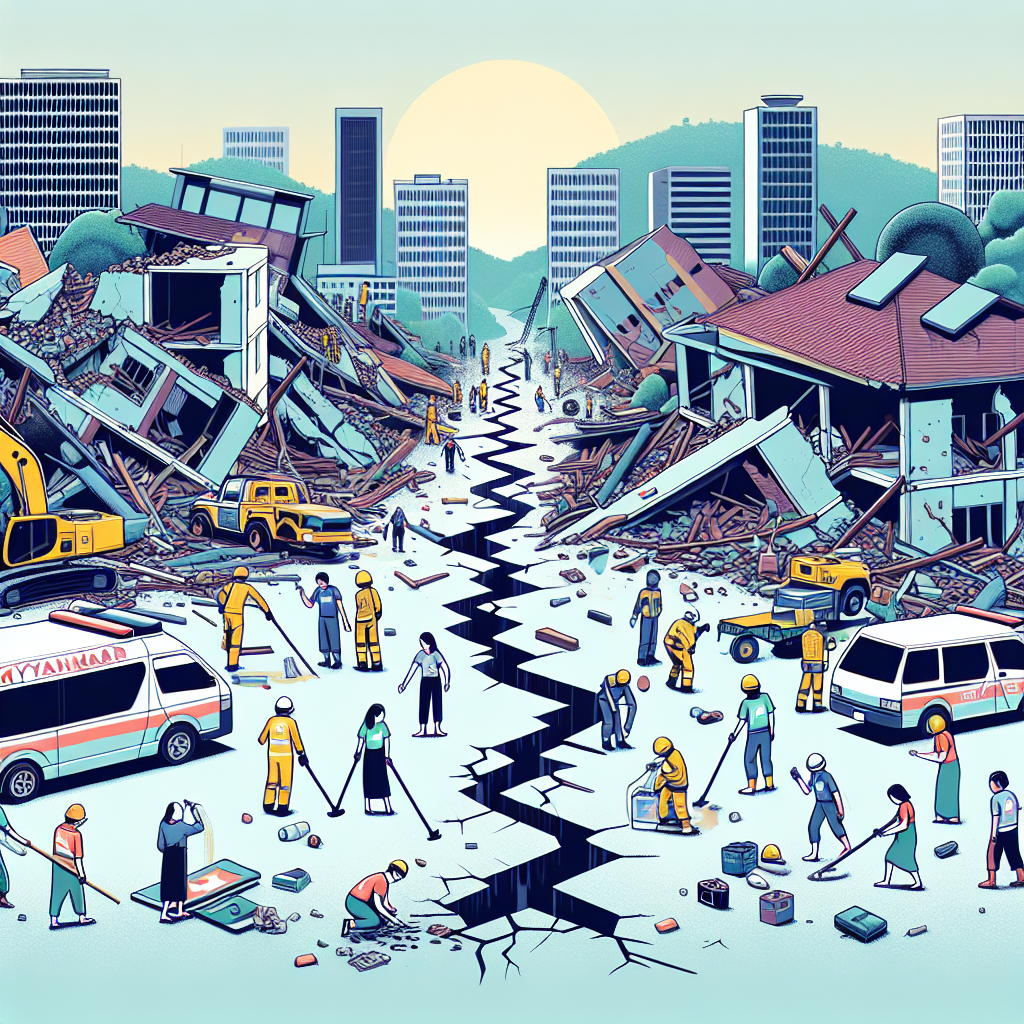Myanmar Earthquake Shakes Nation: What You Need to Know About the Aftermath and Recovery Efforts
On October 10, 2023, a significant earthquake struck Myanmar, registering a magnitude of 6.8 on the Richter scale. This seismic event has tragically affected thousands of lives, leaving communities shattered and prompting urgent calls for aid. As the dust begins to settle, the focus now shifts to the aftermath and the ongoing recovery efforts that are crucial for rebuilding the nation. In this article, we’ll explore the immediate impacts of the earthquake, the response from local and international agencies, and the long-term recovery plans in motion.
The Immediate Impact of the Quake
The earthquake's epicenter was located near Mandalay, one of Myanmar's major urban centers. The tremors were felt across various regions, including Yangon, the capital, and even as far as neighboring countries such as Thailand and India. Reports indicate that at least 200 lives have been lost, with thousands more injured. Infrastructure damage has been extensive, with homes, schools, and hospitals suffering severe structural failures.
In the immediate aftermath, residents reported panic as buildings swayed and some crumbled. The tremors lasted for approximately 30 seconds, but that was enough to cause widespread chaos. Emergency services were quickly deployed, but the response was hampered by pre-existing challenges, including the ongoing political unrest and limited resources in the region. As rescue teams sift through the rubble, the focus is on finding survivors and providing medical assistance to those injured.
Response from Local and International Agencies
The government of Myanmar has activated emergency protocols and is working alongside local NGOs to provide relief to the affected areas. Medical teams have been dispatched to treat injuries, and makeshift shelters have been established to accommodate those who have lost their homes. However, the response has been complicated by the political situation in the country, which has limited access to certain areas and restricted aid distribution.
International agencies, including the United Nations and various humanitarian organizations, have pledged their support. They are working to assess the damage and provide essential supplies, including food, clean water, and medical care. The UN has called for immediate donations to help facilitate these efforts, emphasizing the need for a coordinated response to prevent further humanitarian crises. The collaboration between local and international entities is vital in ensuring aid reaches those who need it most.
The Road to Recovery
As rescue operations continue, the focus is gradually shifting towards recovery and rebuilding. This process will undoubtedly be long and complex, requiring substantial resources and planning. Experts estimate that rebuilding infrastructure alone may take years, given the extent of the damage. Efforts will need to prioritize not only rebuilding homes and schools but also restoring essential services like electricity and water supply.
The government has announced its commitment to work with international partners to create a comprehensive recovery plan. This plan aims to ensure that rebuilding efforts are sustainable and consider the vulnerabilities exposed by the earthquake. There is a strong focus on improving building codes and disaster preparedness to mitigate the impact of future seismic events. Engaging local communities in the recovery process is also seen as vital to ensure that the needs of those most affected are met.
Community Resilience and Support Initiatives
One of the most inspiring aspects of the aftermath has been the resilience of local communities. Neighbors have come together to support one another, sharing resources and providing shelter to those displaced. Community leaders are organizing efforts to distribute food and necessities, highlighting the importance of solidarity in times of crisis.
In conclusion, the earthquake that struck Myanmar has left an indelible mark on the nation. While the immediate impacts are devastating, the collective effort of the government, local communities, and international agencies gives hope for recovery. As the nation begins to rebuild, the focus must remain on sustainable solutions that prioritize safety, community engagement, and resilience against future disasters.

No comments yet. Be the first to comment!